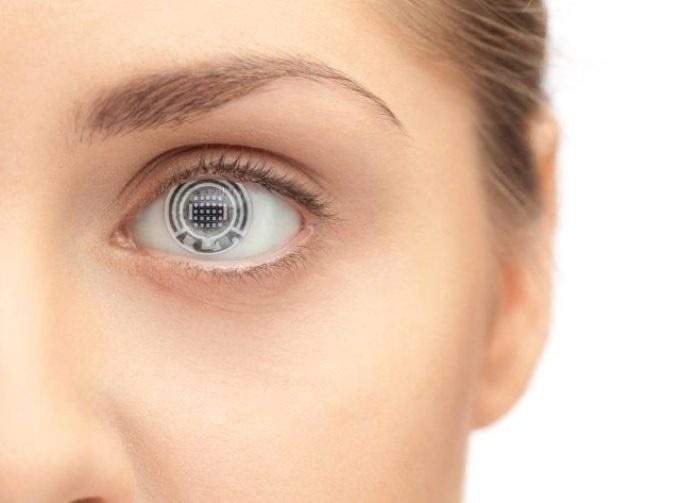Apr 5 2017
In the near future, patients and doctors might be able to monitor blood glucose levels and various other significant signs of disease by using transparent biosensors that are implanted in contact lenses instead of using invasive tests. These bio-sensing lenses are based on the scientific know-how that was the reason for the development of smartphones that include brilliant displays, and researchers state that the lenses can be probably used for tracking drug use or can function as an early detection system for cancer as well as various other medical conditions.
 Transparent biosensors in contact lenses-made visible in this artist's rendition-could soon help track our health. CREDIT: Jack Forkey/Oregon State University.
Transparent biosensors in contact lenses-made visible in this artist's rendition-could soon help track our health. CREDIT: Jack Forkey/Oregon State University.
The research work was presented on April 4, 2017, by the research team at the 253rd National Meeting & Exposition of the American Chemical Society (ACS), held till Thursday by ACS, the world’s largest scientific society. The meeting features over 14,000 presentations on a broad array of scientific subjects.
These biosensors probably won’t put blood labs out of business. But I think that we can do a lot of diagnostics using information that can be extracted from tear drops in the eye.
Gregory S. Herman, PhD
Herman initially proposed to use bio-sensing when he worked in the industry, where he collaborated with two other researchers to formulate a compound formed of indium gallium zinc oxide (IGZO), a semiconductor that drastically transformed electronics, by providing consumers with higher resolution displays for smartphones, televisions, and tablets with enhanced touch-screen sensitivity and power-saving capacity.
Upon moving to Oregon State University in the year 2009, Herman started analyzing the biomedical applications of the technology. Specifically, he aimed to discover a means to aid diabetic people to constantly and efficiently monitor their blood glucose levels by means of the bio-sensing contact lenses.
According to Herman, in contrast to the prick-and-test method, continuous glucose monitoring can aid in minimizing the risk caused by diabetes-related health problems. However, almost all the constant glucose monitoring systems mandate the insertion of electrodes under the skin at numerous locations, which can be painful. Moreover, the electrodes can also lead to skin irritation and other infections.
In Herman’s words, apart from eliminating such difficulties, the bio-sensing contact lenses can also enhance user compliance as the users can effortlessly replace the lenses every day. In addition, in contrast to electrodes under the skin, these lenses are invisible, aiding the users in feeling less self-conscious while using the lenses.
In order to investigate the concept, Herman and his collaborators initially created a low-cost technique for making IGZO electronics. As a next step, the researchers applied the technique to produce a biosensor comprising of a transparent sheet of IGZO field-effect transistors and glucose oxidase (an enzyme capable of disintegrating glucose). Upon adding glucose to the mixture, blood sugar was oxidized by the enzyme. Consequently, the pH level of the mixture was altered and successively activated changes to the electrical current flowing through the IGZO transistor.
In the case of traditional biosensors, such electrical changes are used to evaluate the concentrations of glucose in the interstitial fluid under the skin of a patient. However, the evaluated glucose concentrations are considerably low in the eye. Therefore, the biosensors integrated into the contact lenses must be much sensitive. In order to overcome this difficulty, the research team developed nanostructures within the IGZO biosensor with the potential to detect glucose concentrations far lower than those that occur in tears.
According to Herman, theoretically, over 2500 biosensors can be implanted in a 1-mm square patch of an IGZO contact lens, where each biosensor has the ability to measure a different bodily function. Herman stated that once the biosensors are completely developed, they can transmit significant health information to smartphones as well as other Bluetooth or Wi-Fi enabled devices.
Herman and his colleagues have previously applied the IGZO system to catheters for measuring uric acid, a crucial indicator of kidney function. They are further investigating the probability of using the system for advance detection of cancer as well as other grave conditions. However, Herman feels that it may take up to one year or more for making a prototype bio-sensing contact lens accessible for animal testing.
Funding from the Juvenile Diabetes Research Foundation and the Northwest Nanotechnology Infrastructure, a member of the National Nanotechnology Coordinated Infrastructure, supported by the National Science Foundation, is acknowledged by Herman.